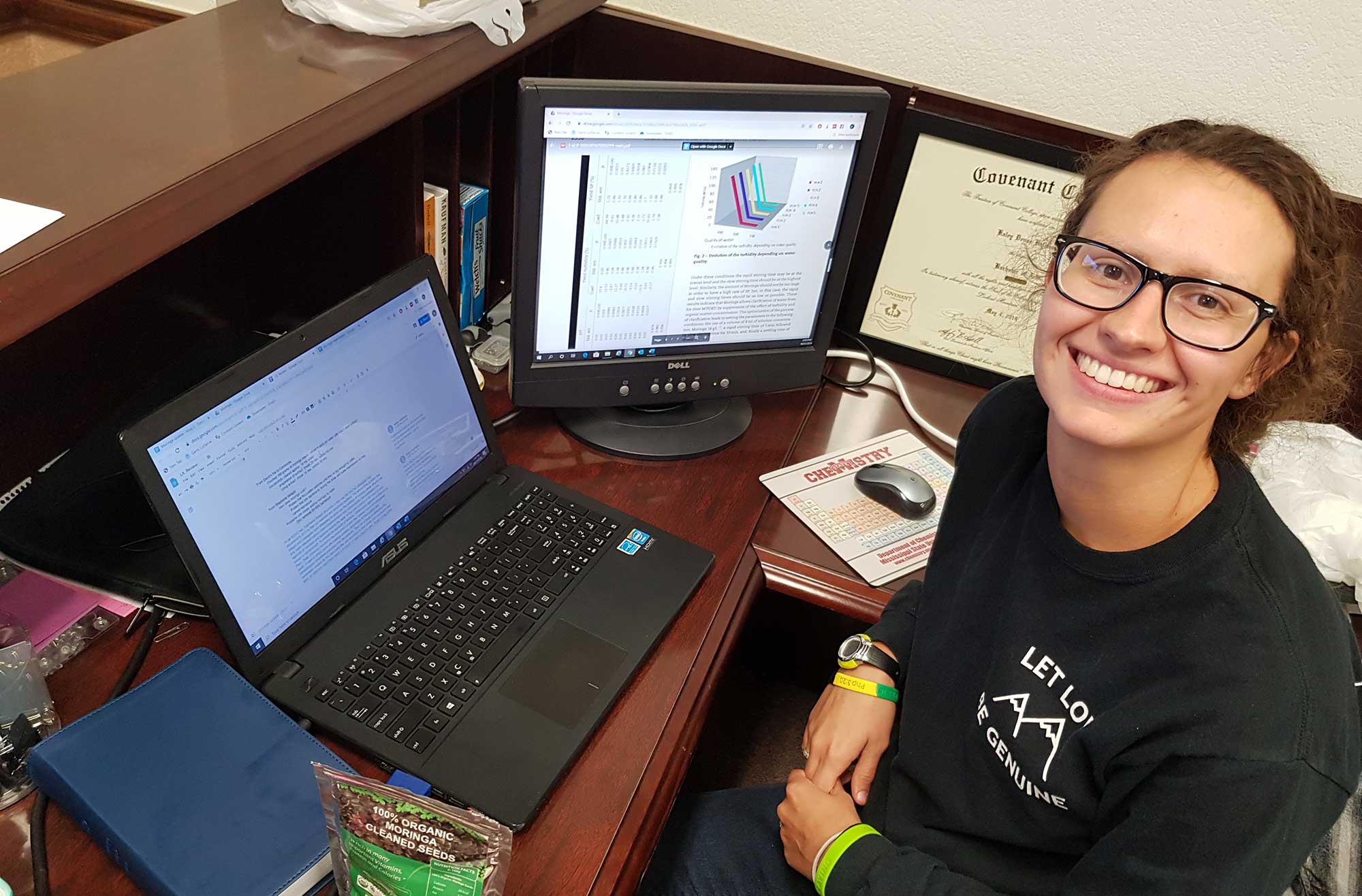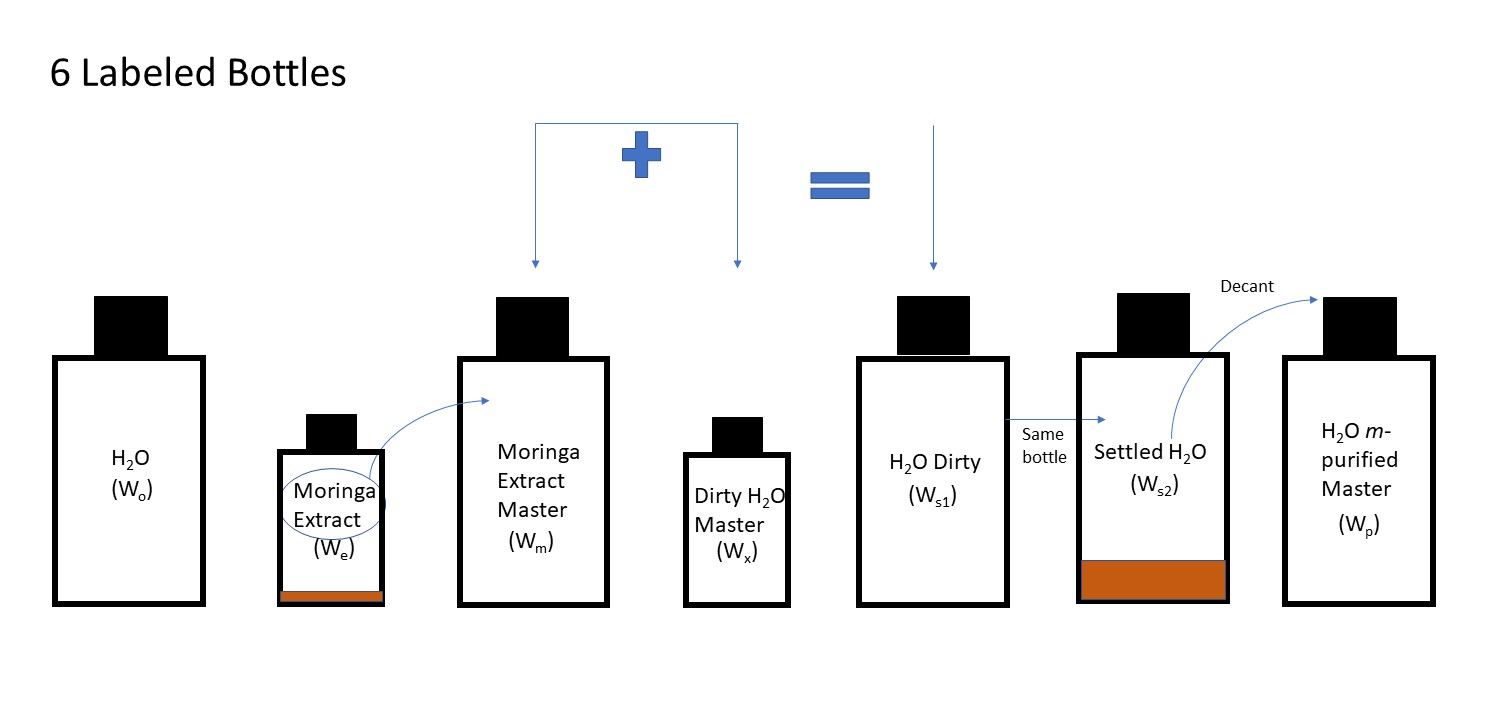God, I thank you that you planted the first moringa seed. That you imbued the seed with its clarifying properties and in your providence gave us the wisdom and knowledge to use it.
~ Prayer during my morning prayer walk on Monday, October 28th.
Hello friends! Over the past several weeks I have begun researching articles about moringa to understand how moringa has been used by others to clarify water. It has been exciting to learn about this “miracle tree” (as it is often called), and I wanted to share with you some highlights of my research.
A brief history…why moringa?
Moringa is a tropical tree that was originally native to northern India but now grows throughout Central America, Africa, the Caribbean, and parts of Southeast Asia. There are 13 species of moringa, but only one is recorded as having valuable medicinal benefits: Moringa oleifera. From this species, compounds extracted from multiple parts of the tree (including leaves, bark, and seed oil) are used for antibiotics, anti-inflammatories, cancer and liver treatments, and nutritional supplements (Shebek et al., 2015). In 1979, M. oleifera was discovered as a natural flocculant (Poumaye et al., 2012), and has since then been extensively studied as a potential substitute to other common inorganic flocculants, such as alum.
Other than being locally available (which for some developing countries means cheaper), moringa, unlike alum, is biodegradable, poses less environmental health hazards, and does not change the water’s pH or conductivity, components that are important in monitoring the potability of water for consumption (Ndabigengesere et al., 1995).
How does moringa clarify water?
The seeds of M. oleifera hold a variety of components: carbohydrates, fats, fibre, proteins, water, and ash (Adesina et al., 2019). Around 50% of the seed is taken up by proteins, but only a few of those proteins give moringa its clarifying properties. In fact, according to Dr. Stephanie Velegol and her colleagues at Pennsylvania State University, only 1% of moringa seed mass contains the cationic proteins that are responsible for flocculation and killing bacteria (Shebek et al., 2015). Since these proteins are positively charged and many turbid waters contain dirt and dissolved organics that are negatively charged, the moringa proteins and the particles that make water cloudy are attracted together~~opposites attract!

This attraction causes flocculation of the suspended particles, forming larger clumps that then settle to the bottom of the water column. Dr. Velegol has a wonderful description of this process in a talk she delivered at the ECHO conference in 2017. It can be found on YouTube here (see 11:00 – 12:42).
How are we going to use moringa?
Although it is well established in scientific literature that M. oleifera is a useful flocculating agent, there are discrepancies regarding the optimal conditions for flocculation to occur. This optimization is what David and I will be studying over the next several months. We will be asking and, Lord willing, answering questions, such as: What is the least amount of moringa extract we can use to adequately clarify the largest amount of water? Is that amount readily accessible near the Brasat Trav village? How much time will it take to clarify enough water for the people in the village?
Our moringa research is still in its beginning stages, but I am excited to continue learning about this amazing tree and to discover a sustainable, economically reasonable way to utilize moringa seeds as a water clarifier in Cambodia. On Monday afternoon, October 28th, David and I came together in front of our whiteboard to brainstorm an experimental design. The rough sketch below conveys our early thinking regarding the number of solutions we will have to label and how we might assign a name to each one.
The Gospel connection.
As we continue working out the details, our prayer is that by providing a sustainable way to clarify the water in Brasat Trav, we can show the villagers a glimpse of what it means to be cleansed by the Holy Spirit.
“How priceless is your unfailing love, O God! People take refuge in the shadow of your wings. They feast on the abundance of your house; you give them drink from your river of delights. For with you is the fountain of life; in your light we see light.” – Psalms 36:7-9
- Shebek, K.; Schantz, A. B.; Sines, I.; Lauser, K.; Velegol, S.; Kumar, M. The Flocculating Cationic Polypetide from Moringa oleifera Seeds Damages Bacterial Cell Membranes by Causing Membrane Fusion. Langmiur 2015, 31, 4496-4502.
- Poumaye, N.; Mabingui, J.; Lutgen, P.; Bigan, M. Contribution to the clarification of surface water from the Moringa oleifera: Case M’Poko River to Bangui, Central African Republic. Chemical Engineering Research and Design 2012, 90, 2346-2352.
- Ndabigengesere, A.; Narasiah, K. S.; Talbot, B. G. Active agents and mechanism of coagulation of turbid waters using Moringa oleifera. Water Research 1995, 29 (2), 703-710.
- Adesina, O. A.; Abdulkareem, F.; Yusuff, A. S.; Lala, M.; Okewale, A. Response surface methodology approach to optimization of process parameter for coagulation process of surface water using Moringa oleifera seed. South African Journal of Chemical Engineering 2019, 28, 46-51.



